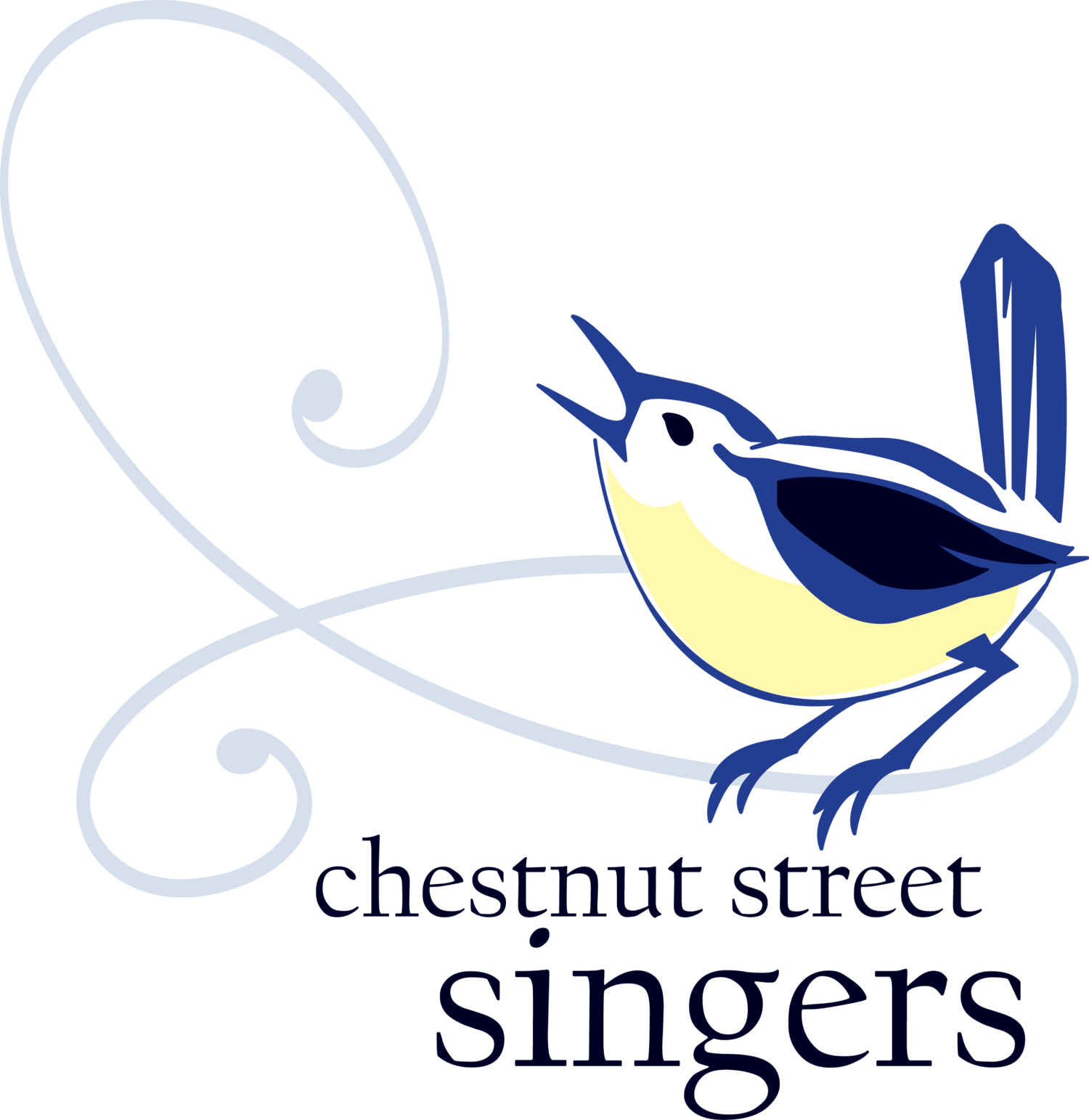Music to Hear
Sunday, June 6, 2010: First Unitarian Church of Philadelphia
Maura Caldwell, Bimal Desai, Jen Hayman, Michael Johnson, Ken Olin, Joy Wiltenburg, Caroline Winschel, Rick Womer
Lobet den Herrn Knut Nystedt
Sicut Cervus Giovanni Pierluigi da Palestrina
God Be In My Head Jackson Berkey
Ave Verum Corpus William Byrd
Tomorrow Shall Be My Dancing Day Philip Stopford
Esto Les Digo Kinley Lange
Shall I Compare Thee To A Summer’s Day? Nils Lindberg
Le Chant des Oyseaux Clément Janequin
Music to Hear George Shearing
I. Music to Hear
II. Shall I Compare Thee To A Summer’s Day?
III. Is It For Fear To Wet A Widow’s Eye
IV. Blow, Blow, Thou Winter Wind
V. Sigh No More, Ladies, Sigh No More
When Chestnut Street Singers was founded in the winter of 2010, the ensemble’s original mission was clear: the group was to be a Renaissance choir. Almost immediately, however, the singers realized that although they loved singing Victoria and Palestrina, they didn’t want to deny themselves the privilege of working with more contemporary, albeit still Renaissance-inspired, works.
It is therefore very appropriate that we open today’s concert with Knut Nystedt’s setting of Psalm 148, “Lobet den Herrn.” Nystedt, one of the luminaries of twentieth-century Norwegian composition, is well known for his homages to Bach; indeed, the psalm text is best known musically in its Bach setting. Beyond his dedication to Bach, however, Nystedt frequently bases his choral works on medieval and Renaissance harmonies and textures. This juxtaposition—contemporary elegance with Renaissance techniques—perfectly exemplifies Chestnut Street Singers’ approach and ideology.
Giovanni Pierluigi da Palestrina’s “Sicut cervus” and Jackson Berkey’s “God Be In My Head” offer a similarly complementary pairing. Palestrina (c. 1525–1594) is one of the best-known composers of the Italian Renaissance, famous both in his own lifetime and in musical scholarship. Most notably, he is often credited as the “Savior of Church Music”: when some church officials tried to ban polyphony from sacred music, fearing that the moving parts would interfere with the intelligibility of holy texts, Palestrina forcefully defended his technique. Like “Sicut cervus,” Jackson Berkey’s “God Be In My Head” features a simple, sacred text embellished by moving textures. The piece opens with a traditional chant incipit, and as it was commissioned in 1993 as an easy-to-memorize “signature piece” for the University of Wisconsin, the text repeats even as the harmonies build.
William Byrd’s “Ave verum Corpus,” which was published in 1605 with other pieces using private devotional texts, hearkens back to the Renaissance. Byrd (1540–1623) nimbly composed in many of the forms current in England at the time, ranging from consort music to secular English tunes to sacred music for both Protestant and Catholic communities. “Ave verum Corpus” appeared in Byrd’s collection of Gradualia, which contained more than one hundred motets using Catholic liturgical texts. Byrd was nonetheless favored by England’s Protestant monarchy; in 1575, Elizabeth I granted Byrd and Thomas Tallis a joint twenty-one-year monopoly on the patent for printing music and ruled music paper. They celebrated by producing an elaborate set of motets dedicated to and lauding the queen. Although his career as a printer was a financial failure, Byrd was overwhelmingly popular and successful as a composer during his lifetime. Today he is remembered even by non-musicians on November 21, when he—along with Tallis and John Merbecke—is venerated with an Episcopal feast day.
Like Byrd, Clément Janequin (c. 1485–1558) also has a place in the histories of both performed and printed music. Janequin was a Parisian contemporary of Pierre Attaingnant, who, several decades after Gutenberg, was the first to use single-impression movable type for printed music. Attaingnant published over 1500 chansons, but his output overwhelmingly featured Janequin above all other composers. As a result, few composers were more popular during their lifetimes than Janequin. The bulk of Janequin’s work is secular, and some of his most famous pieces are long, sectional chansons mixing onomatopoeia with traditional text. Besides “Le Chant des Oyseaux,” Janequin also composed “La Chasse” and “La Bataille,” which, as their titles suggest, call for the singers to imitate the sounds of a foxhunt and a battle.
Along with Nystedt, Philip Stopford, Kinley Lange, Nils Lindberg, and George Shearing represent the more contemporary composers on today’s program, though all of them dabble in earlier forms and traditions. Besides the obvious musical references to the traditional sound of Renaissance-era choirs, their textual choices are equally evocative. Appropriately for a springtime concert, we have the pleasure of featuring two complementary settings of “Shall I Compare Thee To A Summer’s Day?”, William Shakespeare’s Sonnet 18, first published in 1609. While Stopford, Lange, and Lindberg are earlier in their careers—in the United Kingdom, the United States, and Sweden, respectively—Shearing is a well-established jazz pianist and composer in both his native Britain and in the States. His virtuosity in jazz and swing reinterpretations of classical techniques is especially evident in the five-part set “Music to Hear,” featuring Shakespearean texts, close jazz harmonies, and accompanying piano and double bass.
